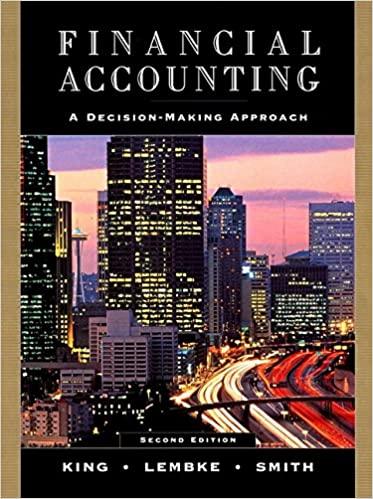Question
Paul is starting a new job with SuperKleen janitorial services. Provided he is not fired for shirking, Paul will stay with SuperKleen for twenty years.
Paul is starting a new job with SuperKleen janitorial services. Provided he is not fired for shirking, Paul will stay with SuperKleen for twenty years. His productivity (assuming he does not shirk) and value of leisure over this period are given by the first two columns of the attached spreadsheet. SuperKleen is deciding between two wage lifetime profiles it might offer to Paul. These are labelled as wage profiles A and B in the attached spreadsheet. The discount rate is zero.
a) What is the present value of Pauls lifetime productivity? What is the present value of the wages he receives from SuperKleen under profile A? Under profile B? What words might you use to describe the compensation policy embodied in each of these two schemes?
b) When is Pauls efficient retirement date? If he is paid according to profile A will he retire voluntarily at that date? What if he is paid according to profile B?
c) For each year Paul works at SuperKleen, use a spreadsheet to calculate the remaining present value of Pauls productivity at SuperKleen, i.e. whats the present value of output he has yet to produce (including the current year) at each date of his career. (Hint: start at Pauls last year with SuperKleen and work backwards).
d) Do the same thing as in part (c), but for Pauls wages (in separate columns for the A and B wage profiles). In other words, at each date of his career, find the present value of the wages Paul has yet to receive from SuperKleen (if he stays on the job and doesnt shirk). Do this for the remaining present value of leisure too (this is what Paul gets if he stops working altogether at any particular date).
e) If Paul shirks (for example he sleeps on the job) and is caught, he is fired. One option he has after being fired is to take an alternative job where (because the workers are easily monitored) shirking is not an issue. In this job he produces 50 units of output less each year than at SuperKleen. Add columns to your spreadsheet that calculate Pauls productivity each year on the alternative job, and his remaining present value of productivity on that job. Assume that, if he takes this job, the firm offering it just breaks even, i.e. over the course of his career there, he receives a wage profile equal in present value to his remaining productivity there.
f) Now consider Pauls incentives to shirk in his job at SuperKleen. If he shirks in any given year, he experiences a gain in on-the-job leisure that year that is worth 50 to him. In that event, he is detected with probability p=.25 (set up your spreadsheet so you can input alternative values of p, and of the value of the extra leisure he gets from shirking). If he is detected, Paul is fired and takes his next best alternative (which is either the alternative job or leisure, i.e. early retirement, whichever is higher) for the rest of his career. So, overall, Pauls net gain to cheating consists of: The extra on-the-job leisure of 50 (which he gets for sure) 3 Personnel Economics Exercise 4 A (1-p) chance of losing nothing A p chance of the difference between his remaining present value of wages at SuperKleen and the remaining present value of his next best alternative to working at SuperKleen. In your spreadsheet, calculate Pauls net gain to shirking in each year of his career under wage profile A, and under wage profile B. (Hint: use excels max function to pick the higher of two arguments).
g) What are Pauls net gains from shirking in his 17th year at SuperKleen under wage profile A? Under profile B? Overall, which profile gives him the greater incentive to shirk? Comment on which stages of his work life where Paul is most tempted to shirk under each profile, and explain.
h) Increase the on-the-job leisure Paul gets from shirking from 50 to 100. Does wage profile B still prevent him from shirking throughout his career? Now put this value back to 50 and reduce the firms detection probability to .1. Now does wage profile B prevent shirking? In each of the above cases, if profile B does not prevent shirking, how would you modify it to prevent shirking?

Step by Step Solution
There are 3 Steps involved in it
Step: 1

Get Instant Access to Expert-Tailored Solutions
See step-by-step solutions with expert insights and AI powered tools for academic success
Step: 2

Step: 3

Ace Your Homework with AI
Get the answers you need in no time with our AI-driven, step-by-step assistance
Get Started


